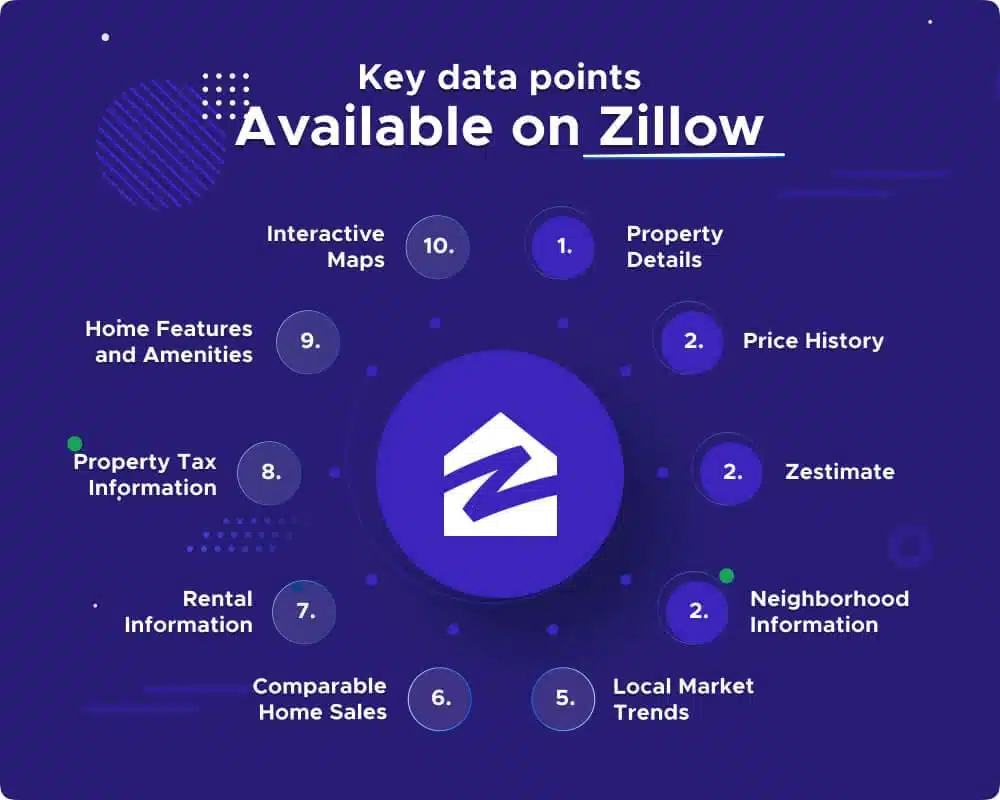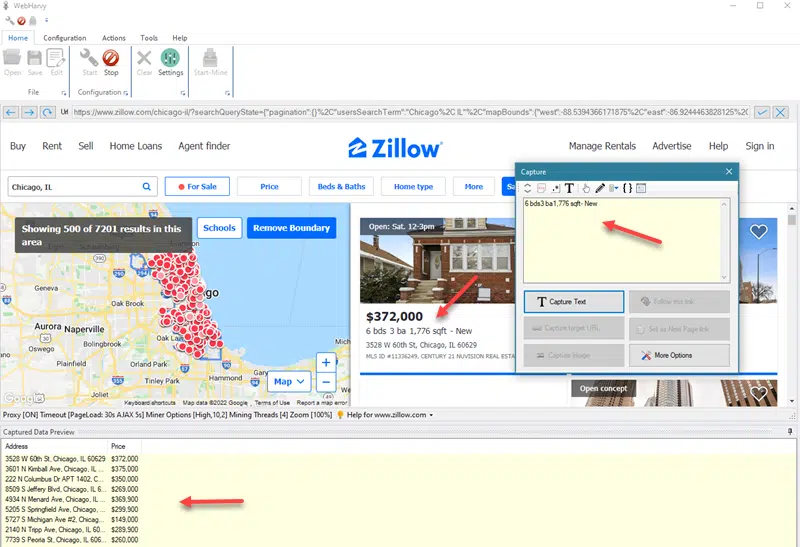
The real estate market has always been a dynamic industry, with pricing trends constantly evolving based on various factors such as location, property features, market demand, and economic conditions. For real estate analysts and pricing strategists, staying ahead of these trends is crucial for crafting competitive and effective pricing strategies. One of the most powerful tools in this endeavor is Zillow, a platform that provides comprehensive data on millions of properties.
However, to truly harness the power of Zillow’s vast data, professionals need to learn how to scrape Zillow data effectively. In this article, we will explore why scraping Zillow data is an essential secret weapon for real estate pricing strategies and how it can help real estate professionals make informed decisions.
What is Zillow Scraping?
Zillow scraping refers to the process of extracting property data from the Zillow website using automated techniques. This data includes detailed information on property listings, including pricing history, property features, location details, square footage, neighborhood information, and more. By scraping Zillow, real estate firms can compile large datasets that reveal valuable insights into the pricing trends of properties in various locations.
While Zillow itself is an essential resource for real estate professionals, manually extracting data is a time-consuming and inefficient process. Scraping Zillow data allows analysts to gather massive amounts of information quickly, saving time and increasing the accuracy of their analyses. Additionally, scraping tools can be programmed to gather real-time data, providing analysts with up-to-date information on market trends.

Image Source: Crawlbase
Why Scrape Zillow for Pricing Strategies?
Pricing a property accurately is one of the most crucial aspects of real estate. If a property is priced too high, it may deter potential buyers, and if it is priced too low, sellers risk leaving money on the table. Real estate professionals must rely on data-driven insights to set optimal prices. Scraping Zillow data gives them access to a wealth of information that can guide this pricing process in the following ways:
1. Access to a Massive Pool of Data
Zillow is one of the most extensive real estate databases available, featuring millions of property listings across the United States. By scraping Zillow, real estate analysts can access a vast amount of data on properties, including detailed pricing history and neighborhood trends. This wealth of data allows analysts to spot patterns and trends that might otherwise be missed.
2. Understanding Historical Price Trends
A key benefit of scraping Zillow is the ability to analyze historical pricing trends. Zillow allows users to see the pricing history of individual properties, including past listings, price reductions, and the time properties have spent on the market. By examining these trends across a large dataset, analysts can better understand how property prices fluctuate over time based on seasonality, location, and other factors. This historical data provides the foundation for future pricing predictions and decisions.
3. Market Comparisons for Accurate Pricing
When setting a price for a property, it’s essential to know how similar properties are priced in the same area. Zillow provides a wealth of comparable listings, allowing analysts to scrape data on properties with similar characteristics such as size, features, and location. By analyzing these comparables, real estate professionals can determine the fair market value of a property and make sure their pricing strategy aligns with the competition.
4. Real-Time Market Insights
One of the main challenges of pricing properties accurately is the ever-changing market conditions. Prices can fluctuate dramatically based on shifts in demand, interest rates, or even local events that impact the market. Zillow scraping allows analysts to monitor real-time data on properties, ensuring they stay updated on the latest market conditions. This helps pricing strategists stay nimble and adjust prices in response to changes in the market quickly.
5. Geo-Specific Insights for Localized Pricing
Real estate pricing can vary widely depending on the location. Zillow provides detailed data on properties within specific geographic areas, such as zip codes, neighborhoods, and even specific streets. By scraping Zillow data, analysts can gain valuable insights into local market conditions, identifying which areas are experiencing price increases, which are stagnant, and which may be undervalued. This localized approach to pricing is crucial for developing targeted strategies that reflect the specific needs and dynamics of each market.
6. Anticipating Market Shifts
Zillow scraping can also help real estate professionals predict market shifts. By analyzing trends in property prices, sale speeds, and buyer demand over time, analysts can identify early indicators of market changes. This foresight allows pricing strategists to adapt their strategies before the market shifts, ensuring that they remain competitive and maximize revenue opportunities.
How to Scrape Zillow Data?

Image Source: WebHarvy
To make the most of Zillow scraping, real estate firms need to understand the process of extracting data effectively. While scraping Zillow manually is a challenging and error-prone task, automated tools can make the process efficient and scalable. Here’s how to scrape Zillow data with ease:
1. Choose the Right Scraping Tool
To start scraping Zillow, you’ll need to select a reliable web scraping tool. Tools like BeautifulSoup, Scrapy, or Selenium are commonly used in the Python programming language to extract data from websites. These tools allow you to navigate Zillow’s website, extract relevant property information, and store it in a structured format, such as CSV or JSON files.
2. Identify the Data You Need
Zillow provides a wealth of information on each property listing, including price, square footage, number of bedrooms, and neighborhood data. It’s important to define the specific data points you need for your analysis before scraping the site. By focusing on key metrics such as property prices, sales history, and neighborhood trends, you can gather the data most relevant to your pricing strategies.
3. Set Up a Scraping Schedule
Since the real estate market is constantly changing, it’s crucial to scrape Zillow data regularly to keep your insights up to date. Setting up a scraping schedule that extracts data at specific intervals—whether daily, weekly, or monthly—can ensure you’re always working with the most current data. For example, scraping data on recent listings and price reductions can help you stay informed on the latest market shifts.
4. Avoid Getting Blocked
Zillow, like many websites, may block users who make too many requests in a short period. To avoid this, it’s essential to use techniques such as rotating IP addresses or using proxies to spread out your requests. You can also use tools to slow down the scraping process, mimicking human browsing behavior and reducing the likelihood of being blocked.
5. Store and Analyze Your Data
Once the Zillow data is scraped, it needs to be stored in a database or file format that allows easy access and analysis. Real estate firms typically store data in spreadsheets or databases, where it can be analyzed using tools like Excel, R, or Python. By analyzing this data, pricing strategists can identify trends, calculate price predictions, and develop competitive pricing strategies.
Best Practices to Scrape Zillow Data Safely
To ensure that Zillow scraping efforts are both efficient and ethical, real estate professionals should follow these best practices:
- Respect Zillow’s Terms of Service: Zillow’s terms of service prohibit scraping in certain cases, so it’s important to check the website’s terms and ensure you are complying with legal requirements.
- Be Mindful of Website Load: Avoid putting unnecessary strain on Zillow’s servers by making scraping requests at a high frequency. Use responsible scraping practices to ensure you’re not overwhelming the site.
- Focus on Relevant Data: Scrape only the data that is essential for your analysis. This will help you avoid unnecessary data collection and reduce the risk of collecting irrelevant or outdated information.
- Regular Updates: Given the fast-moving nature of the real estate market, ensure that your Zillow scraping efforts are updated regularly to stay on top of changes in property prices and trends.
Conclusion
Zillow scraping is a powerful tool that real estate analysts and pricing strategists can use to gain insights into the ever-changing real estate market. By scraping Zillow data, professionals can access a massive pool of information that helps them analyze historical price trends, compare market conditions, and make informed pricing decisions.
In an industry where accurate pricing can mean the difference between a sale and a lost opportunity, scraping Zillow is truly the secret weapon that can drive better real estate pricing strategies.
By understanding how to scrape Zillow data and incorporating it into their pricing models, real estate professionals can unlock the full potential of market insights, stay ahead of the competition, and create pricing strategies that lead to long-term success.Schedule a demo with us today and discover how our advanced scraping solutions can help you stay ahead in the real estate market.




















